MONHEIM TRIENNALE 2024: The Prequel

For you the reader, Monheim might be a new name connected to the festival landscape. Indeed the festival is brand-new and just entered its second cycle as a three-annual event. The town of Monheim at the Rhine river with its 40.000 inhabitants is embedded in the urban triangle of Düsseldorf, Cologne and Leverkusen.

The Monheim miracle
Monheim is a model case of prosperous local-regional development by winning attractive industrial settlements and gaining high tax income in this highly developed urban region due to a dynamic group of unconventional and energetic young politicians in this town of smaller size, clearer overview and shorter lines.

Daniel Zimmermann, mayor of Monheim
In the transformation initiated and led by this group, public transport, education and culture play a crucial role, not only in terms of spending money, but also in terms of the quality of decisions and the quality along the subsequent nodes of implementation. In the course of their campaign the young mayor also took initiative for a new music festival with inter- national appeal. This way public money, political and artistic vanguard connected and made things happen and thrive. In this spirit this year’s Prequel proceedings were comprehensively video-documented by the town to spread the spirit and the achievements. During a city tour, the young mayor himself did the guidance with competent explanation also concerning a diversity of art objects and art projects.
The Triennale concept, its cycles and colours of actual line-up
As part of Monheim’s new cultural efforts, the town houses a new music festival with a rather unique concept consisting of a triennial cycle of The Sound, The Prequel and The Festival. Under the intendancy of Reiner Michalke, former Moersfestival artistic director and long-standing face of Cologne venue Stadtgarten, five curators, Yuko Asanumo, Jessica Hallock, Louis Rastig, Rainbow Robert and Thomas Vencker, bring together a cast of signature artists to work on special projects. For the second edition of the triennale in 2025 it’s 15 artists: eight US-Americans, two Australians, two Germans and one each from UK, Georgia, Iran and Palestine coming from a variety of cities, namely New York, Berlin, Frankfurt, Cologne, San Francisco, Vancouver, Vienna, Tokio, somewhere in Scotland, Utrecht, Ramallah.

part of the coat of arms of Monheim transformed by Robert Wilson
Keywords for the signature artists and their music are ‘multi’ or ‘poly’ in the sense of multi-disciplinary and multi-instrumentalism, poly-cultural, extended, genre-defying, ‘electronic’, ’cross-boundary’, queer. Cultural threads and traces brought in by them are India/Tamil (Ganaya Doraiswamy), Iranian (Rojin Sharafi), Pakistani (Shazad Ismaily) Celtic (Brìghde Chaimbeul) Georgian (Anushka Chkheidze), Korean (yuniya edi kwon), Afro-American (Darius Jones, Selendis Sebastian Alexander Johnson), Czech (Julia Úlehla) and Palestinian (Muqata’a). Even when I here use national referential terms, music is here always meant as a regional entity in the first place. To the just mentioned artists another seven added up: Oren Ambarchi, Shannon Barrett, Peter Evans, Terre Thaemlitz, Ludwig Wandinger and Heiner Goebbels. Instruments present in this package of artists are vocals, el. guitar, trombone, trumpet, smallpipes, violin, piano, drums, vibraphone and electronics. None of the mentioned acoustic instruments is used in usual traditional way. For the 2025 edition, well-known contemporary music composer Heiner Goebbels is also preparing a larger significant open-air production. Music created and performed by these artists is often referred to as ‘experimental’. Personally, the term ‘transformational’ music seems more appropriate to me.

Sharon Barnett, Peter Evans, Darius Jones
The line-up of artists gathers artists of transformational music from different (overlapping) fields and scenes. There are some connections to jazz variants but as a whole the line-up stands athwart to the jazz field.
While a few decades ago a family tree image could represent jazz- and improv-realities, now there are numerous overlapping and embedded scenes with leaking influences and partly communicating among each other. The image of an archipelago would fit more than a family tree to today’s reality of musical variants.
E-lec-tro-nics, Äläktronix …
Even more than conventional sounds, electronic sounds can suggest/evoke alienating spatial imaginations and moods in/on which the mind can wander. The impact can be very concrete physical or more abstracting. It can work dreamlike, sunken, super-elevating, stretching, smoothening, distorting, dilating, disturbing etc.. It can also lead into bathing in weird sounds, threatening beats etc. where the physical and metaphysical side of electronic sounds meet and overlap. In present day electronics sound and space define each other mutually. There was plenty varied electronics based music in The Prequel: Oren Ambarchi, Anushka Chkheidze, Muqata’a and Rojin Sharifi worked mainly from/on an electronic basis. Interesting are the transitions to acoustic sounds as well as the interactions of both.

Anushka Chkheidze, Oren Ambarchi, Muqata’a, Rojin Sharafi
The Prequel’s meetings and performances
In The Prequel, a three-days event, the signature artists are present without their projects. Instead they meet in a loose variety of combinations to perform in more or less spontaneous ways and there are solo performances too. All took place at three locations: a boat on the Rhine river, the MS RheinFantasie, Marienkapelle, a little church behind the Rhine bank, and the club Sojus. The following notes are on musical performances that I saw during my two-days stay in the three-days Prequel.
Musical spirits
As a wandering and connecting musical spirit, Shazad Ismaily had a special beneficial role through his talent to non-hindering join in constellations and to recognise what is needed to foster their sounding by bass guitar, keyboard or percussion as he already did proved to do well during the first Triennial. It worked in a great way in duo with Ganavya Doraiswamy as well as in the constellation of Brigade Chaimbeul, Ganavya Doraiswamyn and yuniya edi kwon and in the finishing concert where he played piano.


Shahzad Ismaily
Composer/pianist Heiner Goebbels played a role as a kind of anchoring musical spirit by duetting with a greater number of the younger artists as Tamil vocalist Ganava Doraiswamy, Brighde Chaimbeul on Scottish small pipes and electronic wizard Muqata’a. With his playing on the prepared piano, he fulfils an important transient and connecting role in the electro(nic)-acoustic area of the Prequel. He turned out a versatile and
inspirational sparring partner for a variety of younger musicians.

Heiner Goebbels
My favourite encounter was the duo of Oren Ambarchi and Muqata’a, which was their first live performance encounter for both. Muqata’a already before in his meeting with Heiner Goebbels had proved to go to and keep to the essentials in a calm, strikingly persistent way. In no time Ambarchi and Muqata’a established common ground and interacted in direct and subtle mode thereby creating an intense and gripping sound happening of great consistency, open to evoking and reliving gruesome scenes from actual reality. They grounded and illuminated each other’s emerging sound textures intensifying those in their inevitable course of dynamic progression and and expressive loading.

Oren Amabarchi


Muqata’a
Ganava Doraiswamy’s voice and singing was a true revelation in all constellations she entered: in duos with Shazad Ismaily (who showed a great feeling for her music.) and with Heiner Goebbels as well as in the quartet with Brighde Chaimbeul, Shazad Ismaily and yuniya edu kwon. It’s the quality of the voice as such and her versatility to effortlessly glide in and out different modes of singing, from her South Indian Tamil mode to occidental variants. She has constituted her very own signature next to those of Arooj Aftab and Amirtha Kidambi.


Ganava Doraiswamy

Ganava Doraiswamy with Shahzad Ismaily + Heiner Goebbels
Brìghde Chaimbeul sculpts the tones/tonality of her ‘little’ instrument, the bellow-blown Scottish smallpipe, in a truly astonishing range with subtle adaptability (nothing compared to the loudness of other bagpipes) what could be experienced in her solo-concert at Marienkapelle. It also fits in in truly enriching and complementing ways into a wide range of instrumental contexts as her group performances convincingly proved. In her hands it is a full-fledged instrument of great versatility. It makes curious with which project Chaimbeul will come up in The Festival edition.


Brighde Chambeul
The Prequel offered a tingling foretaste and made curious for the full-blown affairs.
Afterthoughts
The music created and presented in the parts of this music festival is clearly no mainstream music for a larger audience. But it also shouldn’t be discarded as niche or branded as experimental thereby signalling that it is confined to a privy in crowd. Personally, the term ‘transformational’ music seems more appropriate to me. As we know, certain parts and aspects of this transformational developments at all times inspire mainstream music and appear as sediments in more common music after a while. In the transit zone between both, that’s were audiences can be won.

Julia Úlehla, Ganavya Doraiswamy, Anushka Chkheidze
Monheim Triennale did effective efforts up to now to connect to the citizens by collaboration with schools at this year’s Prequel conducted by Shazad Ismaily, Darius Jones and Julia Úlehla and manifested in the "Living Song II” performance on Friday, July 5. At the moment it is a select smaller audience attending the performances on the Rhine boat and in the church but a new concert hall at the Rhine bank with a larger capacity is under construction and will be ready next year.
The selection of musicians for this 2025 cycle is anything but obvious. For sure more obvious choices would be possible, worthwhile and equally colourful and vibrating. US-American are clearly overrepresented and Europe qua bandwidth underrepresented. However it came about, the selection surely has a certain charm. It would be nice to design a card game with witty-intelligent rules to playfully create interesting selections and line-ups.
Text © Henning Bolte - photo's © FoBo
Other
In case you LIKE us, please click here:
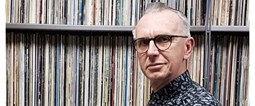
Foto © Leentje Arnouts
"WAGON JAZZ"
cycle d’interviews réalisées
par Georges Tonla Briquet

our partners:
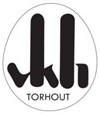


Hotel-Brasserie
Markt 2 - 8820 TORHOUT
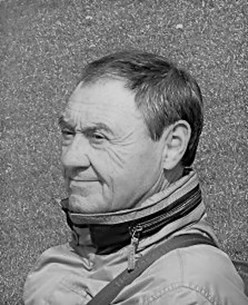
Silvère Mansis
(10.9.1944 - 22.4.2018)
foto © Dirck Brysse
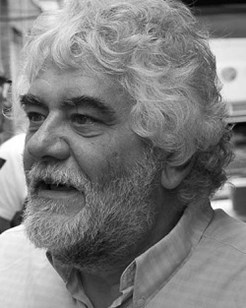
Rik Bevernage
(19.4.1954 - 6.3.2018)
foto © Stefe Jiroflée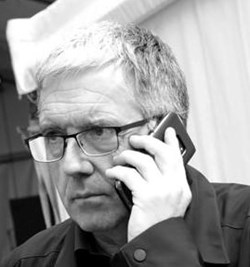
Philippe Schoonbrood
(24.5.1957-30.5.2020)
foto © Dominique Houcmant
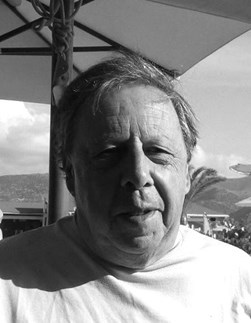
Claude Loxhay
(18/02/1947 – 02/11/2023)
foto © Marie Gilon
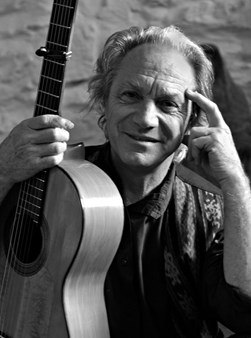
Pedro Soler
(08/06/1938 – 03/08/2024)
foto © Jacky Lepage
Special thanks to our photographers:
Petra Beckers
Ron Beenen
Annie Boedt
Klaas Boelen
Henning Bolte
Serge Braem
Cedric Craps
Luca A. d'Agostino
Christian Deblanc
Philippe De Cleen
Paul De Cloedt
Cindy De Kuyper
Koen Deleu
Ferdinand Dupuis-Panther
Anne Fishburn
Federico Garcia
Jeroen Goddemaer
Robert Hansenne
Serge Heimlich
Dominique Houcmant
Stefe Jiroflée
Herman Klaassen
Philippe Klein
Jos L. Knaepen
Tom Leentjes
Hugo Lefèvre
Jacky Lepage
Olivier Lestoquoit
Eric Malfait
Simas Martinonis
Nina Contini Melis
Anne Panther
France Paquay
Francesca Patella
Quentin Perot
Jean-Jacques Pussiau
Arnold Reyngoudt
Jean Schoubs
Willy Schuyten
Frank Tafuri
Jean-Pierre Tillaert
Tom Vanbesien
Jef Vandebroek
Geert Vandepoele
Guy Van de Poel
Cees van de Ven
Donata van de Ven
Harry van Kesteren
Geert Vanoverschelde
Roger Vantilt
Patrick Van Vlerken
Marie-Anne Ver Eecke
Karine Vergauwen
Frank Verlinden
Jan Vernieuwe
Anders Vranken
Didier Wagner
and to our writers:
Mischa Andriessen
Robin Arends
Marleen Arnouts
Werner Barth
José Bedeur
Henning Bolte
Erik Carrette
Danny De Bock
Denis Desassis
Pierre Dulieu
Ferdinand Dupuis-Panther
Federico Garcia
Paul Godderis
Stephen Godsall
Jean-Pierre Goffin
Claudy Jalet
Chris Joris
Bernard Lefèvre
Mathilde Löffler
Claude Loxhay
Ieva Pakalniškytė
Anne Panther
Etienne Payen
Quentin Perot
Jacques Prouvost
Renato Sclaunich
Yves « JB » Tassin
Herman te Loo
Eric Therer
Georges Tonla Briquet
Henri Vandenberghe
Peter Van De Vijvere
Iwein Van Malderen
Jan Van Stichel
Olivier Verhelst



